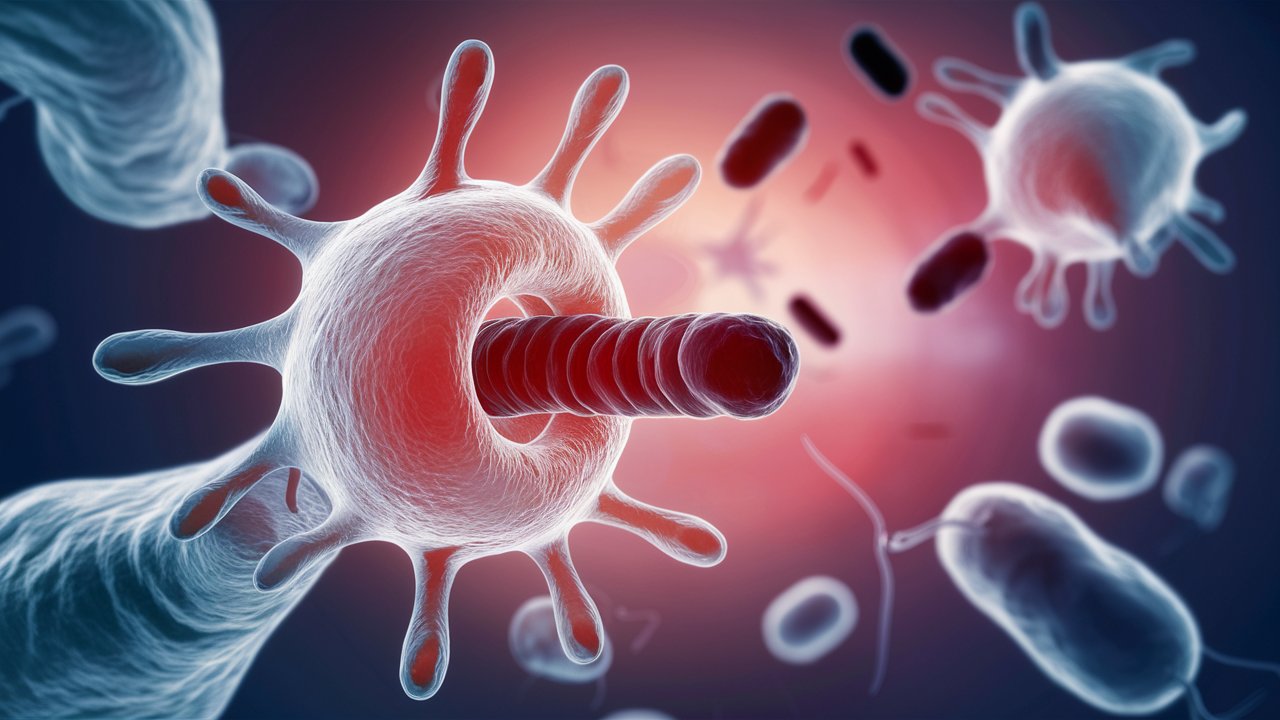
Phagocytosis is a fascinating process where cells engulf and digest particles. This essential biological function helps our bodies fight infections and clear out dead cells. Ever wondered how your immune system gobbles up harmful invaders? That's phagocytosis in action! It’s like a microscopic game of Pac-Man happening inside you. From white blood cells to amoebas, many organisms rely on this process to survive. Understanding phagocytosis can reveal much about how our bodies stay healthy. Ready to dive into the world of cellular munching? Let’s explore 50 intriguing facts about this vital cellular process!
What is Phagocytosis?
Phagocytosis is a fascinating process where cells engulf and digest particles. This mechanism is crucial for immune defense and cellular maintenance. Let's dive into some intriguing facts about phagocytosis.
- Phagocytosis comes from Greek words meaning "cell eating."
- White blood cells, like macrophages and neutrophils, are key players in phagocytosis.
- Phagocytosis helps the body fight infections by engulfing harmful bacteria.
- Amoebas use phagocytosis to consume food particles.
- The process involves the cell membrane wrapping around the particle to form a phagosome.
- Phagosomes fuse with lysosomes, which contain digestive enzymes.
- Phagocytosis was first observed by Russian scientist Ilya Metchnikoff in the late 19th century.
- Metchnikoff won a Nobel Prize for his work on phagocytosis in 1908.
- Phagocytosis is a type of endocytosis, where cells internalize substances.
- The process is energy-dependent, requiring ATP to function.
- Phagocytosis plays a role in clearing dead cells and debris from tissues.
- Some pathogens have evolved mechanisms to evade phagocytosis.
- Phagocytic cells have receptors that recognize and bind to particles.
- Opsonization enhances phagocytosis by marking particles for engulfment.
- Antibodies and complement proteins can act as opsonins.
- Phagocytosis is crucial for wound healing and tissue repair.
- The process can trigger an inflammatory response.
- Phagocytosis is involved in the immune response to cancer cells.
- Some cells can perform phagocytosis on a large scale, engulfing entire cells.
- Phagocytosis can be visualized using microscopy techniques.
The Mechanism of Phagocytosis
Understanding the steps involved in phagocytosis reveals the complexity of this cellular process. Each step is vital for the successful engulfment and digestion of particles.
- The first step is chemotaxis, where phagocytic cells move toward the target.
- Chemotactic signals include bacterial products and damaged tissue signals.
- The second step is adherence, where the cell binds to the particle.
- Receptors on the phagocyte surface recognize specific molecules on the target.
- The third step is ingestion, where the cell membrane engulfs the particle.
- Actin filaments in the cytoskeleton help form the phagosome.
- The fourth step is digestion, where the phagosome fuses with a lysosome.
- Lysosomal enzymes break down the engulfed material.
- The final step is exocytosis, where indigestible residues are expelled.
- Phagocytosis can be inhibited by certain drugs and toxins.
Types of Phagocytic Cells
Different cells in the body are specialized for phagocytosis. Each type has unique functions and characteristics.
- Macrophages are large phagocytic cells found in tissues.
- Neutrophils are abundant white blood cells that rapidly respond to infections.
- Dendritic cells are phagocytes that present antigens to T cells.
- Monocytes are precursors to macrophages and circulate in the blood.
- Microglia are phagocytic cells in the central nervous system.
- Kupffer cells are specialized macrophages in the liver.
- Osteoclasts are bone-resorbing cells that perform phagocytosis.
- Eosinophils can perform phagocytosis, especially against parasites.
- Some epithelial cells can also exhibit phagocytic activity.
- Phagocytic cells can release cytokines to communicate with other immune cells.
Phagocytosis in Health and Disease
Phagocytosis plays a critical role in maintaining health and combating diseases. Its dysfunction can lead to various health issues.
- Defective phagocytosis can result in chronic infections.
- Autoimmune diseases can involve abnormal phagocytic activity.
- Phagocytosis helps clear amyloid plaques in Alzheimer's disease.
- Cancer cells can sometimes evade phagocytosis, aiding tumor growth.
- Certain genetic disorders affect phagocytic cell function.
- Phagocytosis is involved in the clearance of apoptotic cells.
- Inflammatory diseases can result from excessive phagocytic activity.
- HIV can infect and impair phagocytic cells.
- Phagocytosis is essential for the removal of senescent cells.
- Research on phagocytosis is ongoing to develop new therapies for diseases.
The Final Word on Phagocytosis
Phagocytosis plays a crucial role in our immune system, acting as a frontline defense against harmful invaders. This process involves specialized cells, like macrophages and neutrophils, engulfing and digesting pathogens, dead cells, and debris. Without phagocytosis, our bodies would struggle to fend off infections and maintain tissue health.
Understanding phagocytosis also sheds light on various medical conditions. For instance, defects in this process can lead to chronic infections or autoimmune diseases. On the flip side, cancer cells sometimes exploit phagocytosis to evade the immune system.
In essence, phagocytosis is a fascinating and vital biological process. It keeps us healthy by cleaning up cellular messes and fighting off infections. Next time you hear about the immune system, remember the unsung heroes—those phagocytic cells working tirelessly to keep you safe.
Was this page helpful?
Our commitment to delivering trustworthy and engaging content is at the heart of what we do. Each fact on our site is contributed by real users like you, bringing a wealth of diverse insights and information. To ensure the highest standards of accuracy and reliability, our dedicated editors meticulously review each submission. This process guarantees that the facts we share are not only fascinating but also credible. Trust in our commitment to quality and authenticity as you explore and learn with us.


